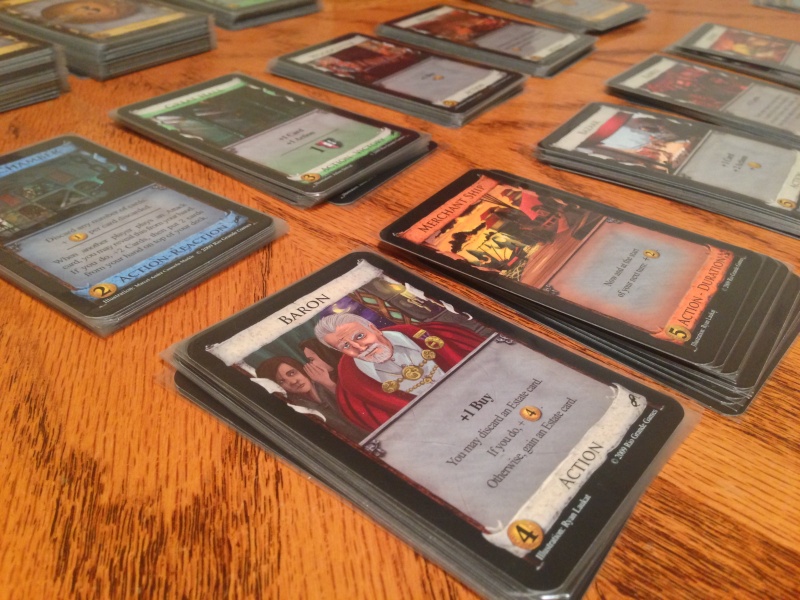 If you are a fan of trick taking games you very well may be familiar with The Crew. Released in 2020, the Crew was a fully cooperative trick taking game that had players trying to complete missions rather than just trying to win the most tricks. Many credit it with reigniting a lot of interest in trick taking games. And given it won the coveted Kennerspiel des Jahres and numerous other awards, it’s hard to argue against that.
If you are a fan of trick taking games you very well may be familiar with The Crew. Released in 2020, the Crew was a fully cooperative trick taking game that had players trying to complete missions rather than just trying to win the most tricks. Many credit it with reigniting a lot of interest in trick taking games. And given it won the coveted Kennerspiel des Jahres and numerous other awards, it’s hard to argue against that.
Now imagine you are playing The Crew, but one person is a spy working against you. Well, that’s Inside Job.
Gameplay Overview:
Similar to the Crew, mentioned above, there are missions that players in Inside Job will be trying to complete. Before playing into a trick, the player who is leading will draw two missions and choose one to play. Each mission only lasts for that trick and gives a generally simple requirement: the second card must be the highest or the last player must win the trick, for instance. The mission will also dictate the trump suit for the trick.

Complete a certain number of missions (based on player count, 7 in a four-player game) and all the agents win! But of course not everyone is an agent, one player is the Insider. They can win by instead winning a certain number of tricks themselves (5, in a four-player game). Insiders also have the added benefit of never having to follow suit.
It’s possible either things happen, in which case players vote on who they believe the Insider is. If the Insider isn’t caught, they win. But if you played it too obvious you go down and the agents take the victory. The entire game is played out over the course of 10 tricks so it’s the type of thing you’ll shuffle up and play a few times in a row.
There are also a lot of special role cards you can add in place of the regular agents. These give players other variable winning conditions and sometimes make them seem more like the Insider, allowing the actual Insider to hide more easily.

Game Experience:
Inside Job mixes one of my favorite types of games—trick taking—with one of my least favorite, hidden traitors. In the end, I was pleasantly surprised at how well it works.
Because the agents are forced to follow suit and play a fairly normal trick taking game it can cause some accusations to fly if missions aren’t being successfully completed. Insiders don’t necessarily have to announce themselves if things are just going poorly anyway. But their ability to break the rules and not follow suit can also give them a big advantage. Especially if the agents seem to have sussed out the spy the game isn’t over. The Insider can still just win the required number of tricks and take the victory anyway.

With just the base roles, it is still a pretty straightforward trick taking game. You could probably play with the roles face up and most of the games would play out the same. More than a few times it was obvious who the Insider was but there wasn’t anything we could do to stop them from winning tricks anyway.
But the variety of special roles allow for even additional shenanigans. My favorite is the decoy, who is similar to the tanner in various werewolf style games. They only win if they get voted as the Insider at the end of the game. It makes for some really nonsense plays but especially if you have the full complement of five players it can make things a bit more lively and really push the game more toward the social deduction side of things.
Which maybe that is what Inside Job’s best feature is. Depending on the roles you choose you can swing the game from 30% trick-taking, 70% social deduction to at least feel more like a 50/50 balance between the two. And it certainly doesn’t overstay its welcome, even having to take a second between each trick to choose a mission the hand plays out in a matter of minutes and in the 20-30 minute play time advertised on the box you can more likely play 3 or 4 times.
Final Thoughts:
When I heard about Inside Job I was honestly pretty skeptical about its ability to be both a trick taking game and a social deduction game that could appease fans of both genres. There really is plenty of both happening here to keep everyone at the table entertained. There are multiple victory conditions for both sides and give players a decent amount to consider even though the game is fairly light on rules.
The additional roles allow you to help tailor the experience toward your group or at the very least play a nice variety within just a few minutes. It’s quick and light and fits nicely in a trick taking collection when you want to play something that is just a little bit more silly.
Final Score: 4 Stars – Trick taking and social deduction that plays quick.
 Hits:
Hits:
• Various ways for both types of roles to win.
• Fun roles for social deduction fans to try out
• Mission-based trick taking (ala, The Crew) still works great
Misses:
• Sometimes the roles just don’t matter, and the Insider wins all the tricks.






















